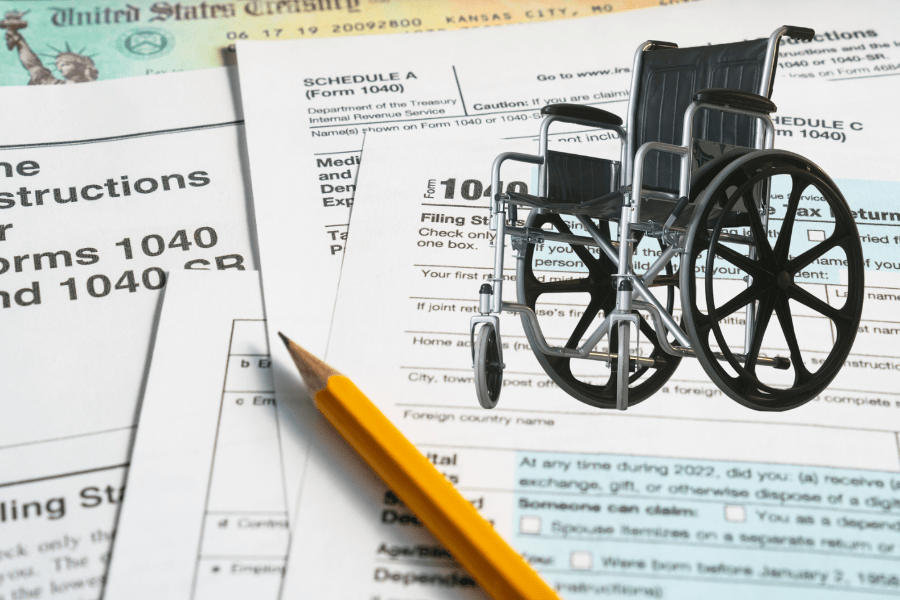A Missed Tax Return Deduction for Families Caring for Children with Special Needs
Thomas M. Brinker, Jr., LL.M., CPA
Professor of Accounting
Arcadia University
Over the last few decades, the number of children diagnosed with autism, Asperger’s syndrome, and other intellectual disorders has skyrocketed, from 1 in 10,000 to 1 in 68.1 In addition to the psychological and financial implications of having a child diagnosed with an autism spectrum disorder, parents of special needs children are often unaware of the substantial tax benefits available to them and frequently forgo many potential tax deductions and credits in determining their tax liability. Medical care expenditures alone for a special needs child can prove astronomical. As a result, parents and their advisors need to become familiar with some unusual Internal Revenue Code provisions
in assisting their clients in the planning process. This edition of MassMutual’s SpecialCare newsletter provides an overview of the medical expense deduction with two very common medical expenditures incurred by our families: special schools and medically necessary capital improvements.
Overview of the Medical Expense Deduction
Only individuals itemizing their deductions on their federal individual income tax returns can claim a medical expense deduction.2 Unreimbursed medical expenses are deductible only to the extent they exceed 10% of a taxpayer’s “adjusted gross income” or AGI. This 10% AGI threshold for the medical expense deduction represents an increase from the long standing 7.5% AGI threshold and applies to all taxpayers as of 2017.3 Alternatively, parents who are eligible to participate in tax-advantaged plans through work for funding medical expenses, such as flexible spending accounts or health savings accounts, can set aside limited amounts of money to finance medical care expenses on a pre-tax basis while bypassing the AGI limitation.4
Special School Instruction
In general, a child’s educational costs are not considered medical care and are therefore not deductible as a medical expense. However, according to Reg. Sec. 1.213-1(e)(1)(v), the unreimbursed cost of attending a special school for an intellectually or physically handicapped individual qualifies as a medical expense deduction if the principal reason for the individual’s attendance is to alleviate their handicap through the resources of the school or institution. A special school is distinguishable from a regular school by the substantive content of its curriculum, and its status is not determined by the institution as a whole but by the nature of the services received by the individual for whom a medical care deduction is sought. The IRS considers the medical facilities and therapeutic orientation of a school as critical factors in determining whether a school qualifies for a medical care deduction. This deduction may also include amounts paid for lodging, meals, transportation, and the cost of ordinary education incidental to the special
services provided by the school. Also, any costs incurred for the supervision, care, treatment and training of a physically and/or intellectually handicapped individual are deductible if provided by the institution.
Furthermore, qualifying capital expenditures, medical conferences and seminars, prescribed vitamin therapy, therapeutic assistance, various therapies, and special diets can add thousands of dollars to the medical expense deduction annually.
The Missed Opportunity: Capital Expenditures as a Medical Expense
Under most circumstances, capital expenditures are not permitted as a medical expense deduction. However, a medical expense deduction is available when the capital expenditure is made primarily for the medical care of the taxpayer, the taxpayer’s spouse, and/or the taxpayer’s dependents. To secure a current medical expense deduction for a capital expenditure, the cost must be reasonable in amount and incurred out of medical necessity for primary use by the individual requiring medical care.5
Qualifying capital expenditures for medical expense deductions fall into two categories: (1) expenditures improving the taxpayer’s residence while also providing medical care (e.g., a central air conditioning system for an individual suffering from a chronic respiratory illness), and (2) expenditures removing structural barriers in the home of an individual with physical limitations (e.g., construction costs incurred for an entrance ramp, widening doorways and halls, customizing bathing facilities, lowering kitchen cabinets, and adding railings).
Capital expenditures in the first category are deductible only to the extent that the cost exceeds the increase in the property’s fair market value as a result of the capital expenditure. However, expenditures incurred in the second category are fully deductible under the presumption that there is no increase in the property’s value as a result of removing a physical barrier. Further, the entire cost of special equipment acquired to assist an individual with physical limitations is deductible. The following examples illustrate expenditures in both categories:
This past year, Theresa was injured in a severe automobile accident. Theresa sustained a disabling leg injury, which requires her to spend most of her time in a wheelchair. Her physician recommends that she install an elevator in her home to alleviate the pressure on her knees from walking up and down stairs. During the year, Theresa made the following expenditures: Wheelchair: $2,500; Elevator: $17,000; Operational and maintenance costs incurred with the elevator: $2,800; and entrance ramp and door modifications: $7,500. According to appraisers, the home increased in value as a result of the elevator by $5,000. As a result, Theresa has a $24,800 medical expense deduction before considering AGI limitations for 2016.
In 2016, Jane, a single mother with AGI of $100,000, fully supported her 20-year old-daughter living with her. Her daughter has no income for the year, and was properly claimed as Jane’s dependent. During the year, Jane installed a central air conditioner at a cost of $15,000, which her physician said was required in caring for the daughter’s asthma. After installation, Jane’s home increased in value by $5,000, allowing for a deduction of $10,000 for the central air conditioner. In addition, Jane incurred the following medical expenses in 2016: prescribed drugs: $500; physician expenses: $1,000; and unreimbursed health insurance premiums: $3,000. As a result, Jane has a medical expense deduction of $14,500 before considering AGI limitations for 2016 and $4,500 after subtracting 10% of her AGI ($100,000). In addition, if Jane’s utility bills increased $150 monthly after installing the central air conditioner system, her medical expense deduction would increase to $6,300 after the AGI limitation.
Under either category, costs incurred to operate or maintain the capital expenditure (such as increased utility expenses and maintenance costs to operate the elevator as illustrated in both examples) are deductible currently as medical expenses as long as the medical reason for the expenditures continues to exist.6
Conclusion
Although many of our families are aware of the medical expense deduction for special schools and education, the deduction for a capital expenditure for medical care is often overlooked. As illustrated, this deduction alone can result in saving thousands of tax dollars.
1 Centers for Disease Control, March 28, 2014 and on March 31, 2016 citing a 30% increase from March of 2012’s 1 in 88 (another significant increase from the reported 1 out of 110 children from 2010).
2 IRC Sec, 213(a)
3 Although the threshold had permanently increased to 10% of AGI as of 2013, it remained at 7.5% of AGI for individuals age 65 and older for tax years thru 2016 under the Patient Protection Act, as amended by the Health Care and Education Reconciliation Act of 2010 (P.L 111-148, Sec. 9013).
4 Patient Protection Act, as amended by the Health Care and Education Reconciliation Act of 2010 (P.L. 111-148, Sec 9013). Flexible Spending Account pre-tax contributions are limited to $2,600 for 2017.
5 Reg. Sec. 1.213-1(e)(1)(iii)
6 Rev. Rul. 87-106,1987-2 C.B.67


